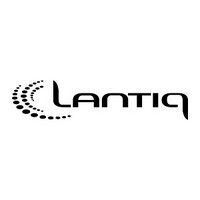PSB2115FV1.2D Lantiq, PSB2115FV1.2D Datasheet - Page 59

PSB2115FV1.2D
Manufacturer Part Number
PSB2115FV1.2D
Description
Manufacturer
Lantiq
Datasheet
1.PSB2115FV1.2D.pdf
(317 pages)
Specifications of PSB2115FV1.2D
Lead Free Status / Rohs Status
Supplier Unconfirmed
- Current page: 59 of 317
- Download datasheet (4Mb)
2.3.4.4
In LT-T mode the IPAC is primarily considered to be in a point-to-point configuration. In
these configurations no S-bus D-channel collision can occur, therefore the default setting
after resetting the IPAC is transparent (IOM-2
In case a point to multipoint configuration is implemented, the characteristic of the D-
channel Mode register must be programmed to DIM2-0 = 001 or 011 (refer to table 27
of chapter 4.3.7) for D-channel collision resolution according to ITU I.430.
Priority allocation is identical to that described for the TE mode.
2.3.4.5
In intelligent NT applications both the IPAC and one or more D-channel controllers on
the S interface and/or the IOM-2 interface have to share a single upstream D-channel.
The intelligent NT configuration involves a layer-1 device (e.g. IEC-Q TE) operating in
TE mode (1.536 MHz DCL rate) and an IPAC in LT-S mode with its D-channel controller
operating in TE timing mode (D-channel transmitting in IOM-2 channel 0).
The IPAC incorporates an elaborate statemachine for D-channel priority handling on
IOM-2. For the access to the D-channel a similar arbitration mechanism as on the S
interface (writing D-bits, reading back E-bits) is performed for the local D-channel
sources (local access), i.e. for the IPAC D-channel controller and for a D-channel
controller connected to the IOM-2 interface (e.g. ICC PEB 2070). Due to this an equal
and fair access is guaranteed for all D-channel sources on both the S interface and the
IOM-2 interface.
For this purpose the IPAC is set in LT-S mode with its layer 1 function programmed to
channel 1 and NT state machine activated. Therefore the layer 1 uses the C/I1 channel
(which is realized by the layer 2 function), however the B1-, B2- and D-channels have to
be mapped in IOM channel 0.
The layer 2 function is configured to TE timing mode (D- and C/I-channel controller
transmits on C/I0 and evaluates C/I0 and C/I1) with S/G bit evaluation (refer to table 27
of chapter 4.3.7). The priority handler for D-channel access on IOM-2 is enabled and the
priority 8 or 10 is selected.
The configuration settings of the IPAC in intelligent NT applications are summarized in
table 3.
Semiconductor Group
S-Bus D-Channel Control in LT-T
D-Channel Control in the Intelligent NT (TIC- and S-Bus)
59
S-bus) D-channel transmission.
Functional Description
PSB 2115
PSF 2115
11.97
Related parts for PSB2115FV1.2D
Image
Part Number
Description
Manufacturer
Datasheet
Request
R

Part Number:
Description:
Single Phase Rectifier Bridge
Manufacturer:
POWERSEM [Powersem GmbH]
Datasheet:

Part Number:
Description:
Manufacturer:
Lantiq
Datasheet:

Part Number:
Description:
Manufacturer:
Lantiq
Datasheet:










